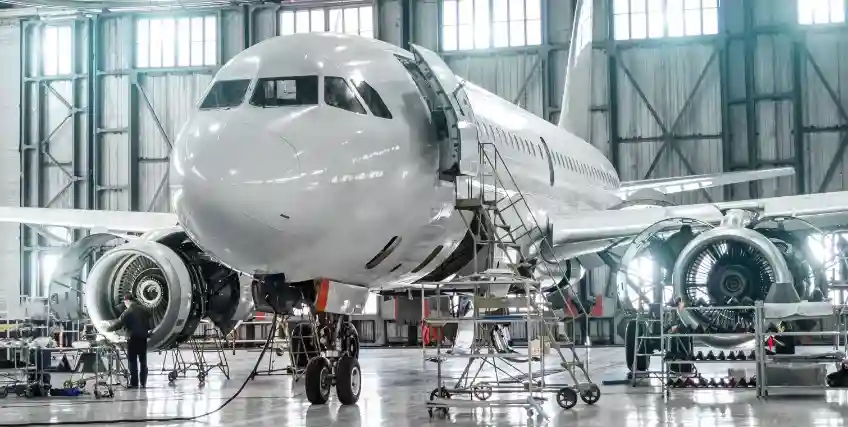Ultimate Guide to Business Aircraft Financing
July 08, 2025 | Last Updated on: July 14, 2025

There are amazing advantages for organizations that can propel forward with business aircraft. From private jets to helicopters to turboprops, business transportation helps to increase productivity, with speed, flexibility, and privacy.
However, general aviation aircraft financing can be a major undertaking. Aircraft pricing ranges from hundreds of thousands of dollars to well into the millions. For most looking for aircraft funding, a business aircraft financing loan can be a smart and practical choice for companies.
This guide to business aircraft financing covers everything from the types of financing and key players to the steps in securing a deal, legal decision making, and strategic tips to optimize your aircraft acquisition.
What is Business Aircraft Financing?
Business aircraft financing is defined as the loan, lease, and alternative financial structures that are used to purchase or acquire an aircraft intended for business use. Aircraft carriers can be bought outright or financed through a lender or lessor, similar to real estate or commercial equipment.
Who Uses Business Aircraft Financing?
When considering who might need business aircraft financing, you might be surprised to learn who exactly falls into that category. This list gives you an idea of who or what might be looking into the business of aircraft funding:
- Corporations that need fast, flexible executive travel
- High-net-worth individuals, startups, and entrepreneurs
- Charter companies that operate under Part 135
- Medical, construction, energy, and agricultural companies
- Fractional owners or jet card providers
Understanding Aircraft Ownership Costs
Before jumping into business aircraft financing, it's imperative to understand the full cost of owning an aircraft. These costs don’t just end at the purchase price. There are always going to be fees that come post purchase. Here are some financial considerations:
Ongoing Costs:
- Maintenance, inspections, tech updates
- Hangar and storage
- Insurance
- Labor salaries
- Fuel and operational costs
- Depreciation and residual value
Costs for aircrafts will impact how lenders structure your financing options and which collateral they may require.
Aircraft Financing Funders
Lenders
- Banks (e.g., Bank of America, Citi, PNC)
- Specialized aviation finance firms (e.g., Global Jet Capital, Stonebriar)
- Credit unions and private lenders
Lessors
- Lessors will provide operating leases. This means that the aircraft remains on the lessor’s balance sheet.
Aircraft Brokers
- Brokers for aircraft are similar to brokers in real estate. They will help you find suitable aircraft, negotiate terms, and arrange financing.
Legal and Tax Advisors
- Technical advisors are essential for building out your ownership needs and minimizing your liability and taxes.
Types of Aircraft Financing
Loans (Debt Financing)
- Structure: Debt financing is a traditional loan that has a down payment and fixed or variable interest.
- Ownership: Borrower owns the aircraft; lender holds a lien.
- Down Payment: 10%–30% is the average known down payment.
- Best for: Buyers who want full ownership and tax depreciation benefits.
Operating Leases
- Structure: Similar to renting, you are able to lease the aircraft for a set term.
- Ownership: The lessor retains ownership.
- Buyout Option: Often includes a purchase option at lease-end.
- Best for: Businesses that want lower upfront costs and flexibility in the agreement terms.
Finance Leases
- Structure: Finance leases are a hybrid of a lease and loan.
- Features: Long-term, fully amortized; lessee responsible for maintenance.
- Accounting Treatment: These are often treated as an asset on a balance sheet.
Asset-Based Lending
- In asset-based lending, the aircraft is used as the primary collateral. This allows for minimal reliance on a borrower’s credit.
Sale-Leaseback
- A sale-leaseback means that you can sell your aircraft to a leasing company, then lease it back.
- Best for: Unlocking capital while retaining usage.
Fractional Ownership and Jet Cards
- Although this isn’t considered true business aircraft financing, it is a cost-sharing method.
- You pay for a fraction of aircraft use (e.g., NetJets, Flexjet).
How to Secure Business Aircraft Financing
Step 1: Know What You Want
This is a basic, obvious step that is often overlooked. Be sure you know what you want and set your expectations accordingly. If your aircraft size is loftier than your budget, you’ll need to reconsider how or what your business easy aircraft financing requirements are.
- Aircraft size and type
- Expected hours of use
- Route profiles
- Budget (upfront and ongoing)
Step 2: Evaluate an Ownership Foundation
Consider the following questions when figuring out your financing needs and requirements.
- Will there be direct ownership (corporate or individual)?
- Is there a special purpose entity (SPE) for liability and tax efficiency?
- Will the aircraft be a domestic or offshore registry?
Step 3: Assemble Your Team
If you want to pursue business aviation financing, here are a few people you may need in your corner:
- Aviation attorney
- Tax advisor
- Broker or consultant
- Lender or finance firm
Step 4: Get Qualified with a Lender
Business aviation financing, like any other business loan, will require getting your business qualified. In order to do this prequalification step, be sure to have your documentation organized and ready to go. Here are some documents to have ready:
- Financial statements, credit records
- Tax returns
- Proof of liquidity/net worth
- Justification for the business (especially for corporate borrowers)
Step 5: Aircraft Decisions
Business aviation financing and ownership are an undertaking. Do your due diligence. Here are some logical best practices when it comes time to make your decisions:
- Hire an aircraft inspector for technical inspection.
- Review the maintenance logs and damage history of the aircraft.
- Do a title search of the aircraft (international registry and FAA or EASA records).
Step 6: Negotiate Terms
With the help of your advisor or tax associate, review the terms of your agreement. Here are some crucial agreements to consider:
- Loan/lease term
- Interest rate (fixed vs. floating)
- Amortization and balloon payments
- Prepayment penalties
- Insurance requirements
- Usage restrictions
Step 7: Legal and Regulatory Filings
With the help of your legal representation, get into the technical details of your filings to ensure that you’re doing everything to code.
- FAA/EASA registration
- Lien filings (UCC-1 in the U.S.)
- International Aircraft Registry (Cape Town Treaty)
- Import/export filings for cross-border deals
Business Aviation Financing Terms to Know
LTV (Loan-to-Value Ratio): The lower the LTV, the better the rate. Common LTVs are 70–90%.
DSCR (Debt Service Coverage Ratio): For corporate borrowers, this is especially important to know.
Balloon Payment: A balloon payment is a lump sum that is due at the end of term which lowers your monthly payments.
Fixed vs. Floating Rate: A fixed rate offers predictability in cost. A floating rate may start lower but may be unpredictable.
Residual Value: A residual value is considered an estimate of the value at the end of the lease. The residual value affects lease pricing.
Find the Right Business Aviation Financing Partner
After going through the core steps to understand your needs in terms of aircraft requirements. The next big requirement is essential to your business aviation financing: finding a partner. Here are some key criteria to consider when researching partnerships:
- Do they have experience or a specialty in aviation finance?
- Is there a global reach? (if you’re going to operate internationally)
- How flexible are the terms?
- How quickly can they execute on financing?
- Do they understand the value of the aircraft?
It will be beneficial to your business and create easy aircraft funding if you are working with institutions that understand aviation-specific risks. This includes maintenance cycles, obsolescence, and regulatory changes.
Risks in Business Aircraft Financing
- Depreciated Value: Aircrafts can lose 30%–50% of value in five years.
- Regulatory Changes: Shifts in FAA/EASA rules or tax code can affect ownership, your financing, and how your business navigates aircraft ownership.
- Risk in Defaulting: If your business revenue drops, aircraft payments can become burdensome. Consider this as you figure out your budget planning.
- Exit Risk: What is the difficulty of reselling or offloading the aircraft at term-end?
There are always ways to mitigate the risks associated with business aviation financing. Some tips to consider include:
- Be conservative with your projections – and your loan requests.
- Build flexibility into your loan terms.
- Keep up to date with your insurance and maintenance diligently.
- Plan for the exit strategy early in order to avoid any miscalculations.
Business Aircraft Financing: Buyers Tips
- Overestimate the true cost of ownership. This means adding 10–15% annually for operating expenses, maintenance, and unexpected needs that will arise.
- Know the resale value – and plan accordingly. Certain models retain value better (e.g., Gulfstream vs. older Learjets).
- Use depreciation to your advantage. Bonus depreciation can offset large amounts of income, which is a win for a costly financial undertaking.
- Consider pre-owned. Many aircraft under 10 years old offer value without the new price tag.
- Look globally for your purchase. Importing an aircraft might possibly be a cheaper scenario, but be sure to factor in compliance and customs.
The Future of Business Aircraft Financing
As business aircraft ownership has become more and more reliant on innovation, there are key takeaways to consider for the future of general aviation aircraft financing.
- Sustainability Prioritization: You can expect ESG reporting and green financing trends (carbon offset programs, newer fuel-efficient aircraft) to become more of the norm.
- Digital Platforms: Online lending platforms and blockchain-backed registries may simplify transactions. Familiarize yourself with these easier, faster registry methods.
- Alternative Lending: Hedge funds, family offices, and fintech lenders are entering the business aircraft financing space.
Final Thoughts on Business Aircraft Financing
Both organizations and individuals to access high-value aircraft without tying up significant capital by enabling business aircraft financing. Whether you're looking to purchase a private jet for executive international travel or lease a long-range aircraft for shipping operations, there’s a financing structure tailored to the needs of your business.
With careful research and planning, a strong advisory team, and a strong understanding of your priorities, you’ll be able to choose the right business aircraft financing that will help your aviation ownership goals soar.
FAQs about Business Aviation Financing
What is a lessor in business aviation financing?
Lessors in business aviation financing offer operating leases. This means that the aircraft remains on the lessor’s balance sheet.
What business functions are helping in aviation financing?
Some key knowledge functions for financing include an aviation attorney, a tax advisor, a broker or consultant, and a lender or finance firm.
What is a good strategy for business aviation financing planning?
Consider overestimating the true cost of ownership. This means adding 10–15% annually for operating expenses, maintenance, and unexpected needs that arise.
What is a fixed rate vs. A floating rate?
A fixed rate offers predictability in cost. A floating rate may start lower but may be unpredictable.
Who uses business aircraft financing?
Corporations that need fast, flexible executive travel, along with high net worth individuals.




